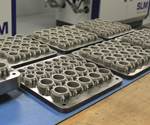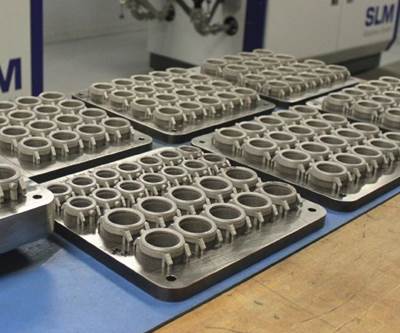The Logistical Value of AM
3D printing can permit a radical change in the geometry of a part. Have we yet seen the extent to which it might change that part’s point of production?
The design possibilities offered by additive manufacturing are getting to be well-understood. Or at least well-recognized. Just how to design for additive is still unclear to many, but in concept, I feel it’s now widely known that 3D-printing-style processes open the door to manufacturing elaborate forms. Engineers in general are beginning to confront the possibilities of the geometric freedoms.
By contrast, I do not feel that manufacturers to the same extent have yet recognized the potential logistical freedoms.
The military recognizes this. I recently had the chance to learn about military leaders’ thinking regarding the logistical power of 3D printing. The context was somewhat confidential, so I’ll be vague. But it is not hard to see the value of additive in supplying a deployed military force. Rather than the current model of factory-to-foxhole for supplying troops in the field—that is, the model of the 20th century’s wars—3D printing instead offer the possibility of far-forward manufacturing of at least some components. Like a MASH unit we know from the old television show (a mobile army surgical hospital), think of a “MAMS” unit, a mobile army manufacturing shop. (The military will come up with a cooler term.) In place of hardware being shipped from far away and stored in a warehouse that is still far from the front line, the digital file alone could simply be sent to one of these units closest to the soldiers in need, for additive fabrication of an urgently required component. The lead time, shipping cost, inventory requirements and transport vulnerability could all be overcome. And while it is the military pursuing these aims, all of these factors would be valuable to overcome in a non-military context as well.
Indeed, in the purely commercial context, AM brings other benefits as well. Since pricing and scheduling an additive build is largely a function of the CAD model and the material choice, these steps are easier to perform in AM than in other manufacturing processes. Pricing and scheduling can be more purely automated. Integrating supply chains and ordering parts automatically thus become easier to realize.
What would it take to get to this logistically efficient model? That is, what would be required before we can see nimble, short-run manufacturing sites producing parts far away from their designer but very near to their users? The military has a wish list. Their requirements would include faster 3D printing speeds (of course), along with digital networking into an automated system that tracks component use and wear, and anticipates manufacturing requirements. Also: use of recycled materials. In the field, it would be nice to grind up an empty ammo can and make the needed part from this.
Commercial manufacturers wouldn’t need that last requirement for their own widely dispersed production. However, they have a special requirement all their own: IP protection. In a model in which manufacturing is dispersed, the manufacturing expertise will not be—it will be centralized. An engineer in the home office will ensure that the company’s product is 3D printed to the same standards and methodology in all of the different sites all over the world, meaning these requirements will be embedded into the way he or she constructs the digital model. In short, there will not just be design intelligence in the digital file sent far away (that’s valuable enough), but there will be manufacturing intelligence in this file as well. As a result, while AM stands ready to disrupt logistics, manufacturers will need data security first.
Related Content
Aluminum Gets Its Own Additive Manufacturing Process
Alloy Enterprises’ selective diffusion bonding process is specifically designed for high throughput production of aluminum parts, enabling additive manufacturing to compete with casting.
Read More10 Important Developments in Additive Manufacturing Seen at Formnext 2022 (Includes Video)
The leading trade show dedicated to the advance of industrial 3D printing returned to the scale and energy not seen since before the pandemic. More ceramics, fewer supports structures and finding opportunities in wavelengths — these are just some of the AM advances notable at the show this year.
Read MoreVulcanForms Is Forging a New Model for Large-Scale Production (and It's More Than 3D Printing)
The MIT spinout leverages proprietary high-power laser powder bed fusion alongside machining in the context of digitized, cost-effective and “maniacally focused” production.
Read MoreLarge-Format “Cold” 3D Printing With Polypropylene and Polyethylene
Israeli startup Largix has developed a production solution that can 3D print PP and PE without melting them. Its first test? Custom tanks for chemical storage.
Read MoreRead Next
With Additive Manufacturing, No Tooling Is Required
In conventional manufacturing methods, tooling can easily cost hundreds of thousands of dollars. With AM, you print as needed, no jigs, fixtures or tooling required.
Read MoreHow Do You Make a Howitzer Less Heavy?
Large nuts that used to be solid metal are now grown with a honeycomb structure on the inside for valuable weight savings.
Read MoreHybrid Additive Manufacturing Machine Tools Continue to Make Gains (Includes Video)
The hybrid machine tool is an idea that continues to advance. Two important developments of recent years expand the possibilities for this platform.
Read More





















